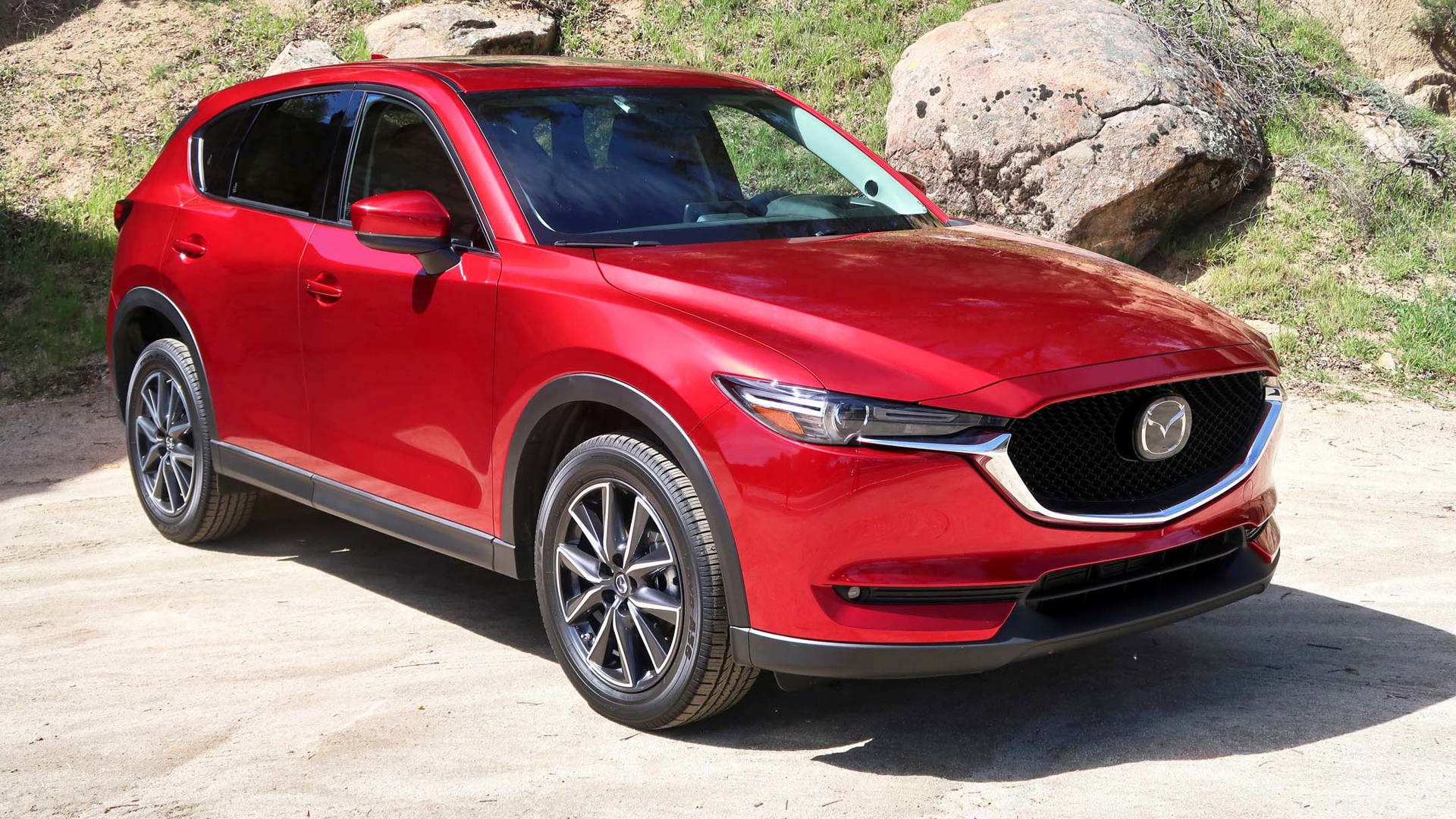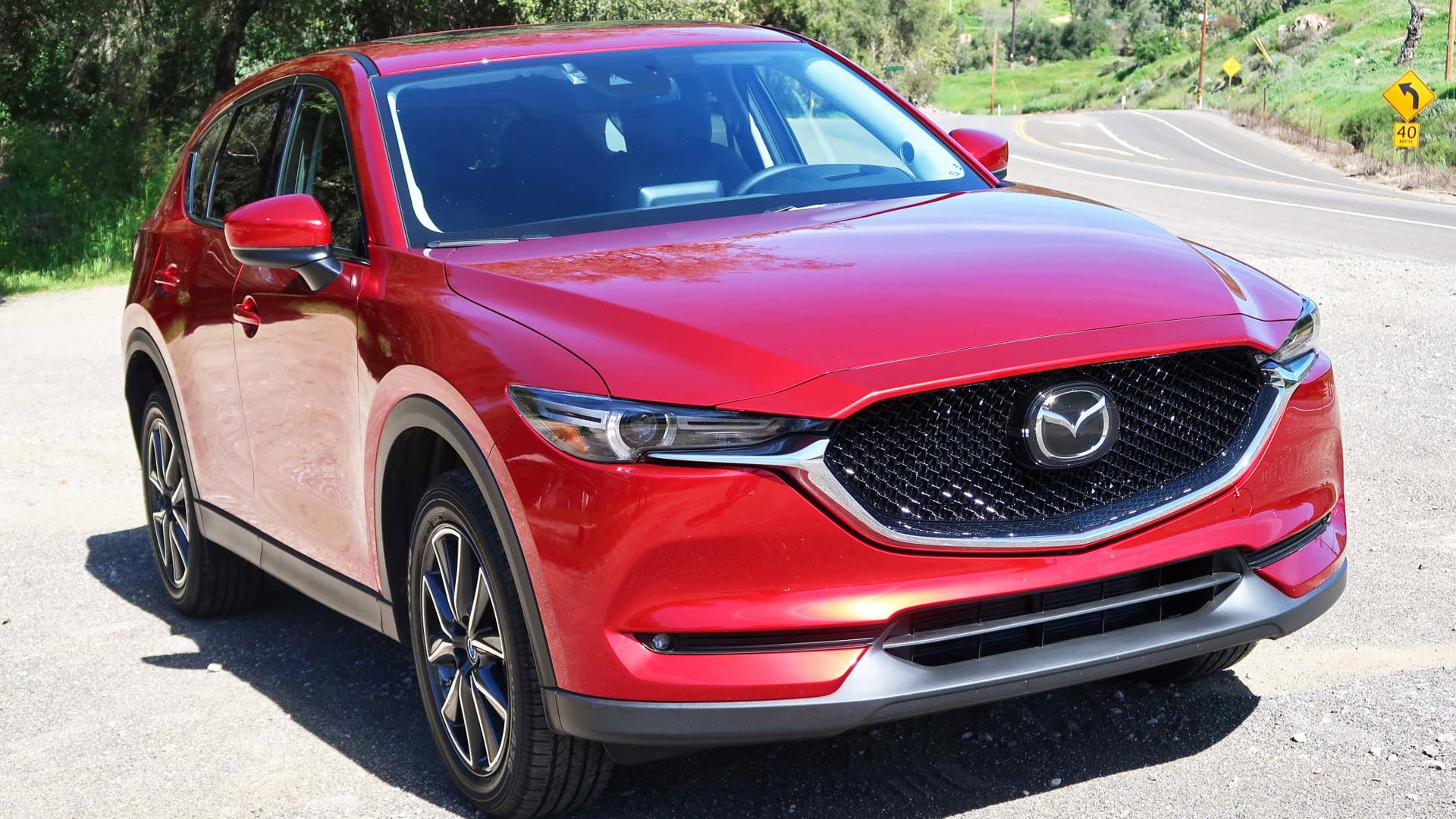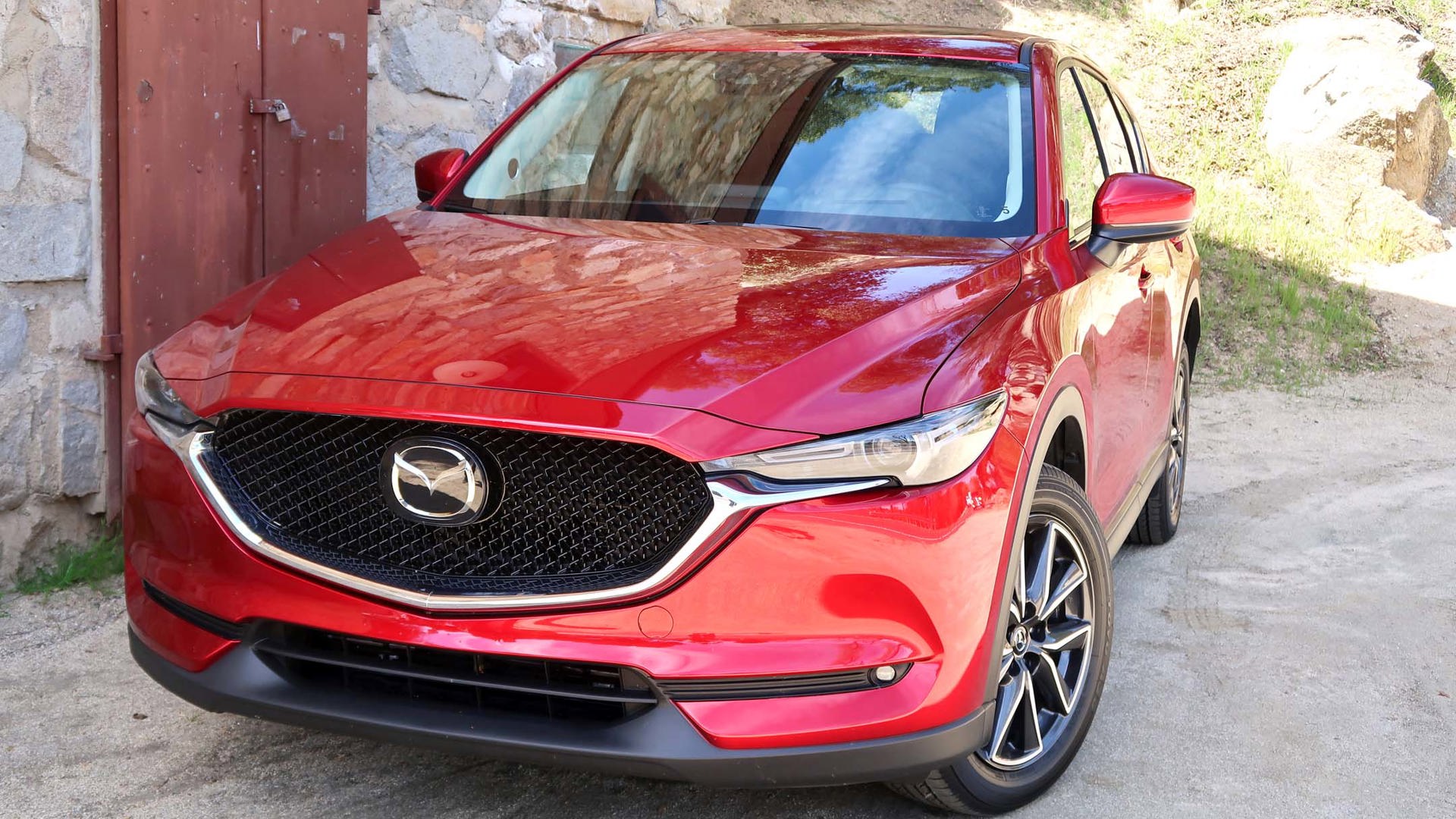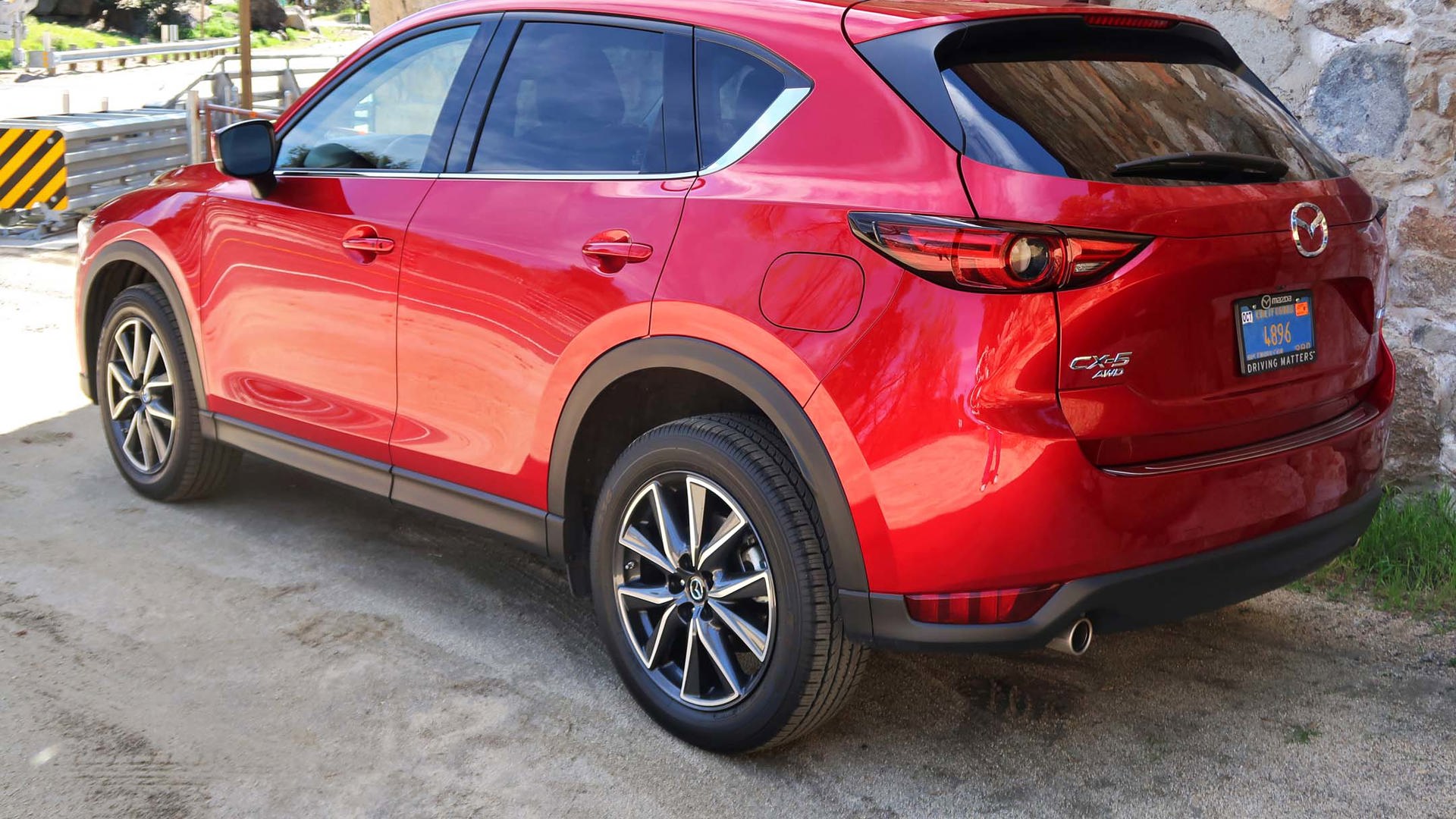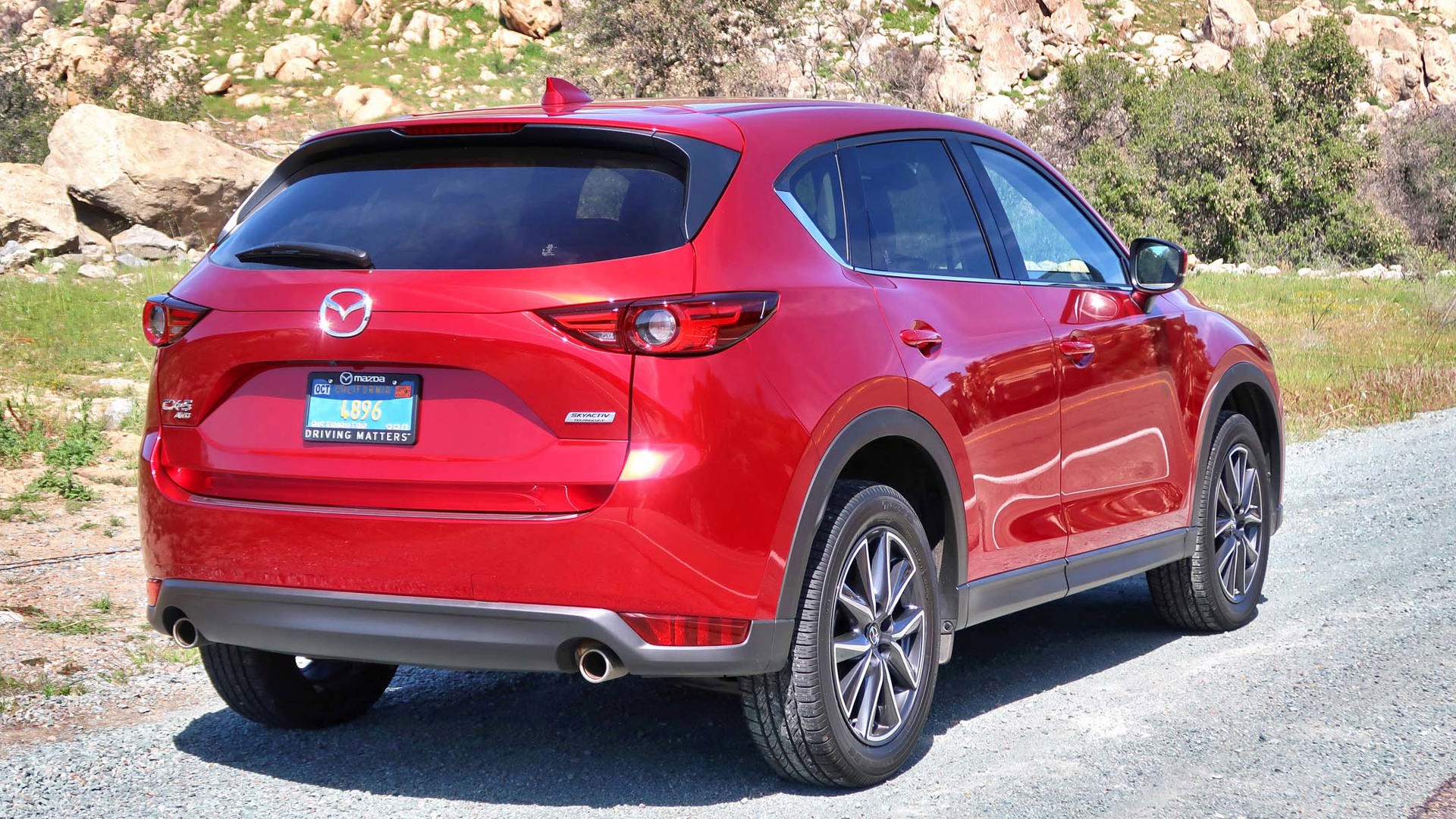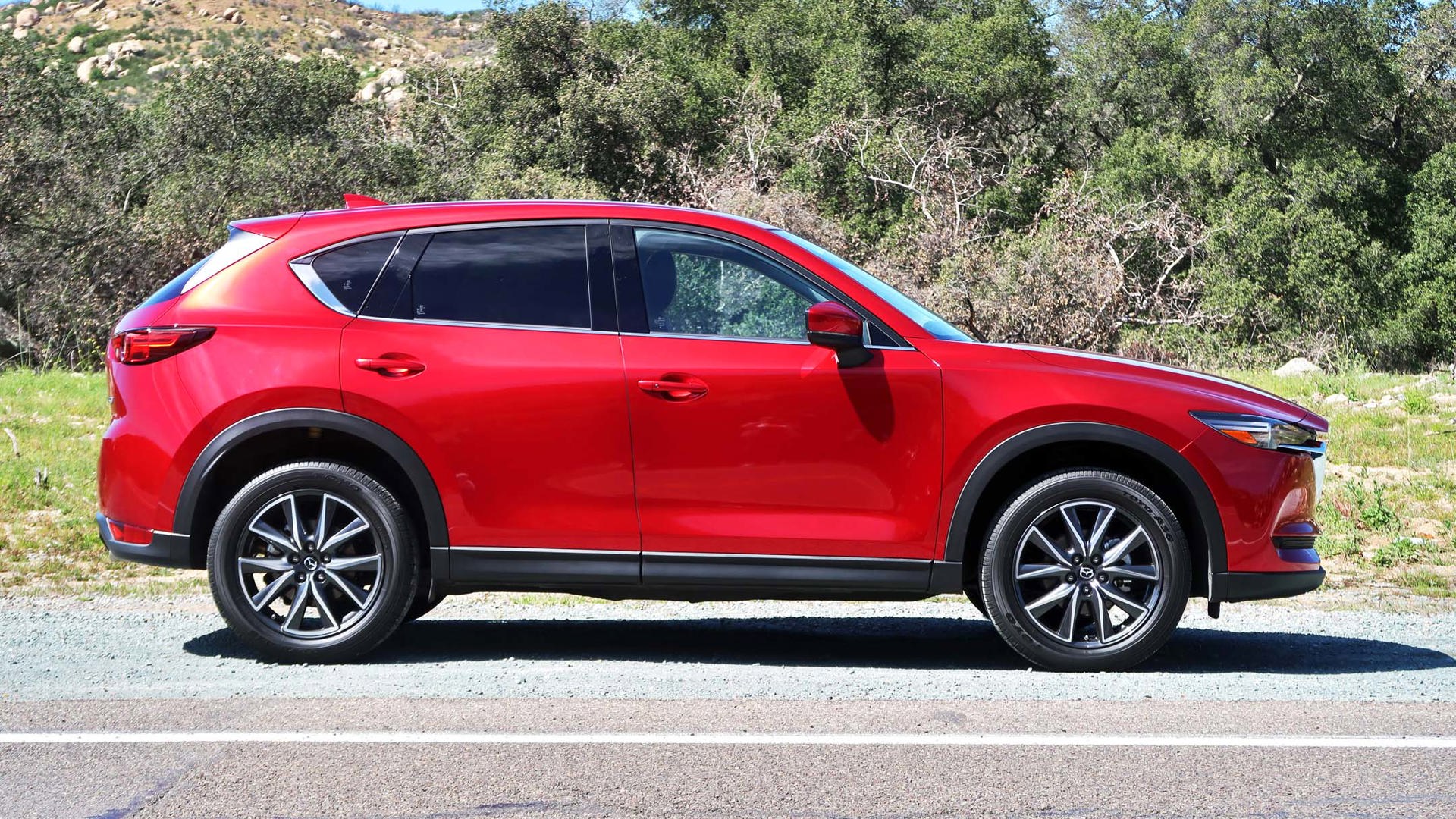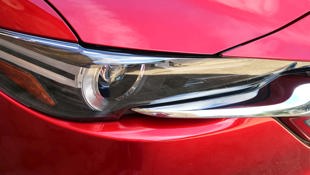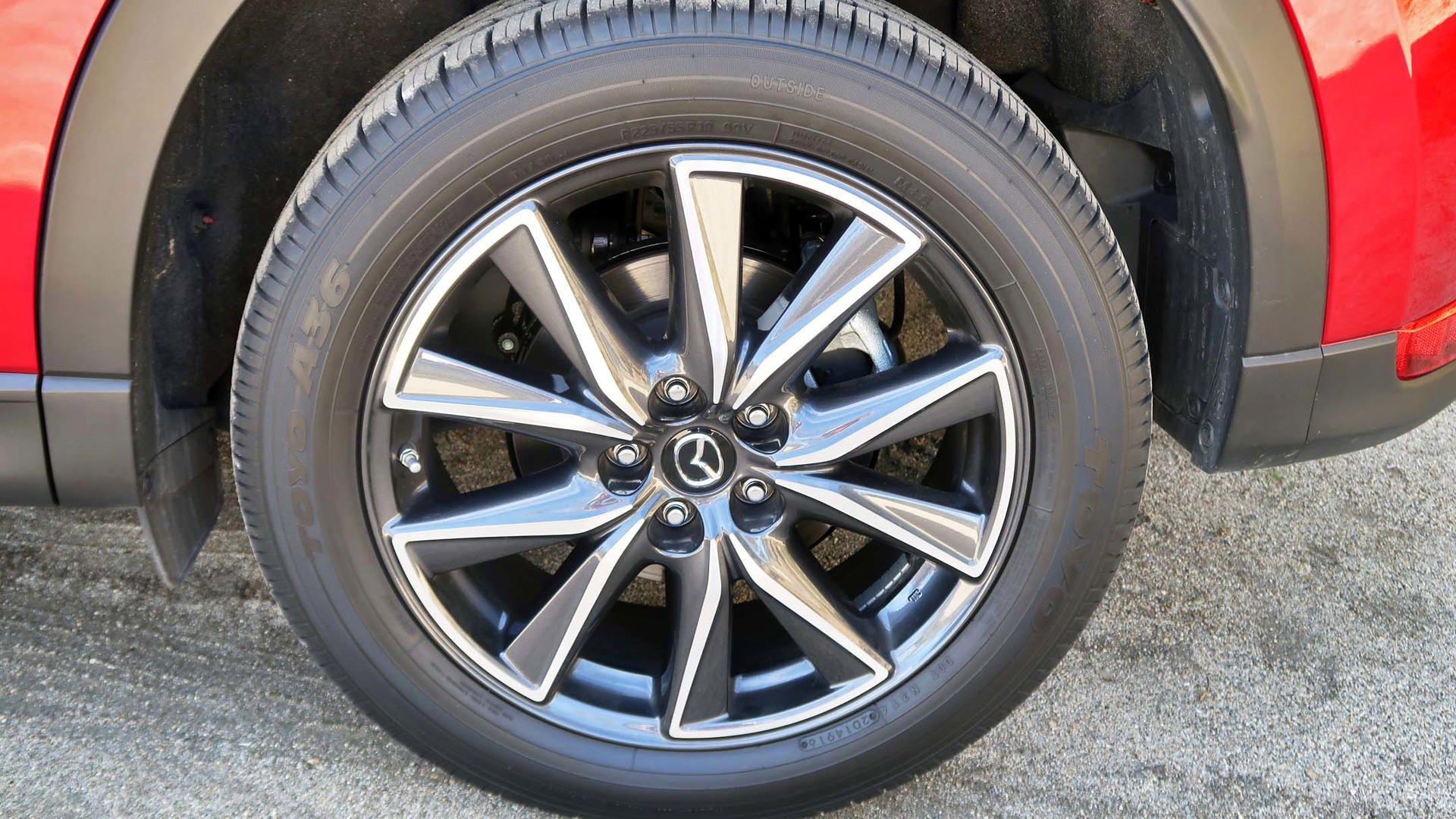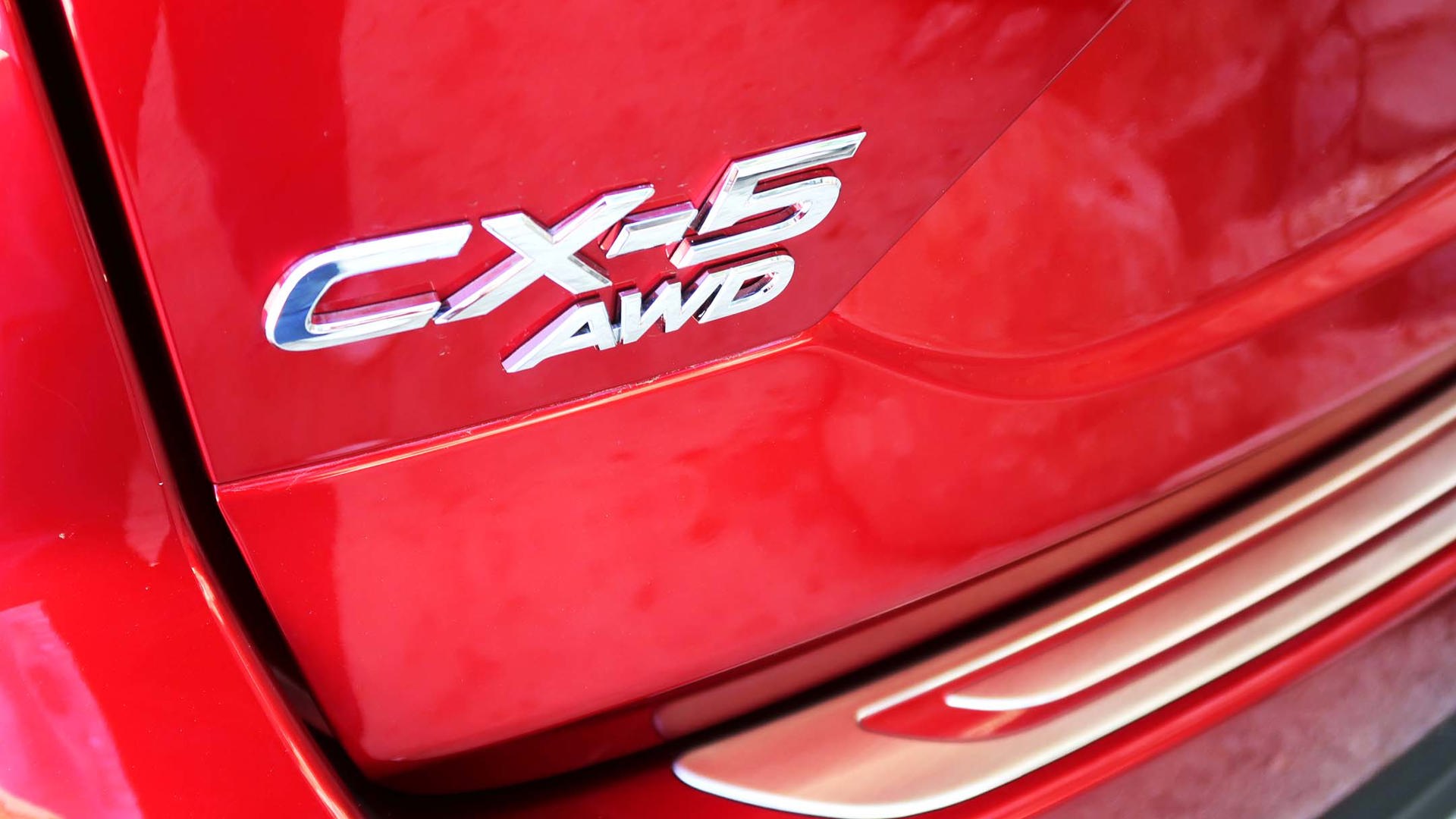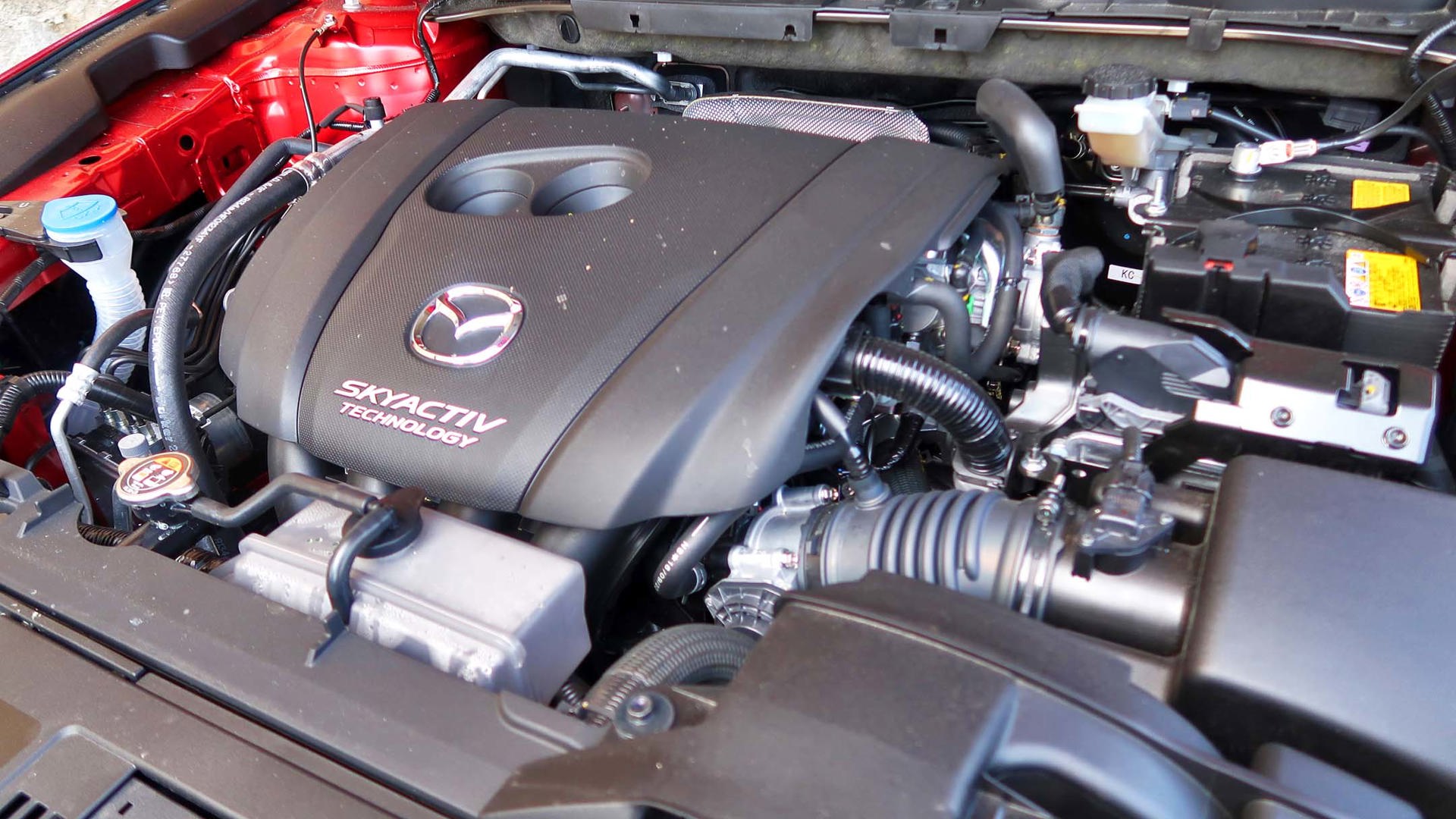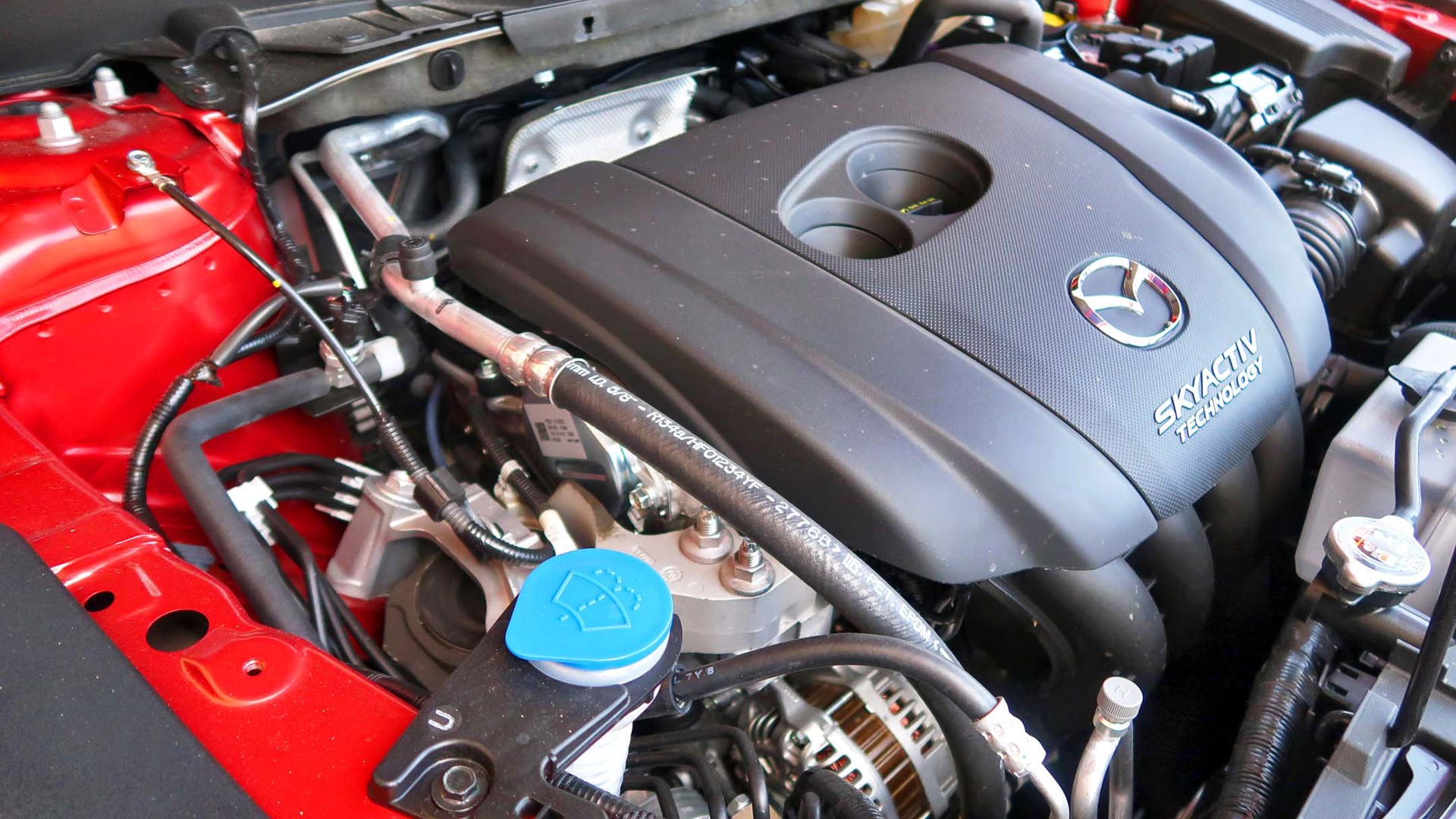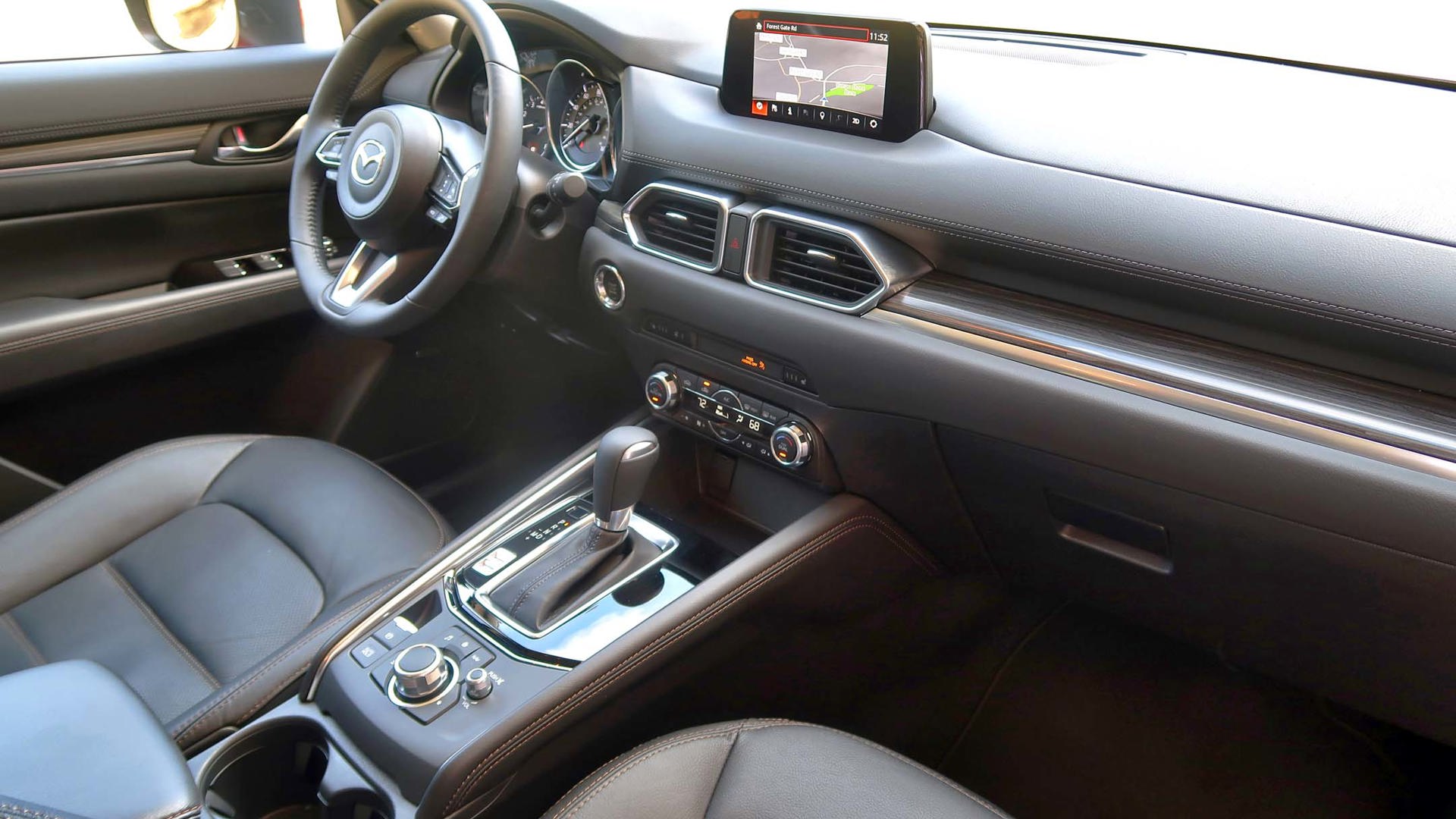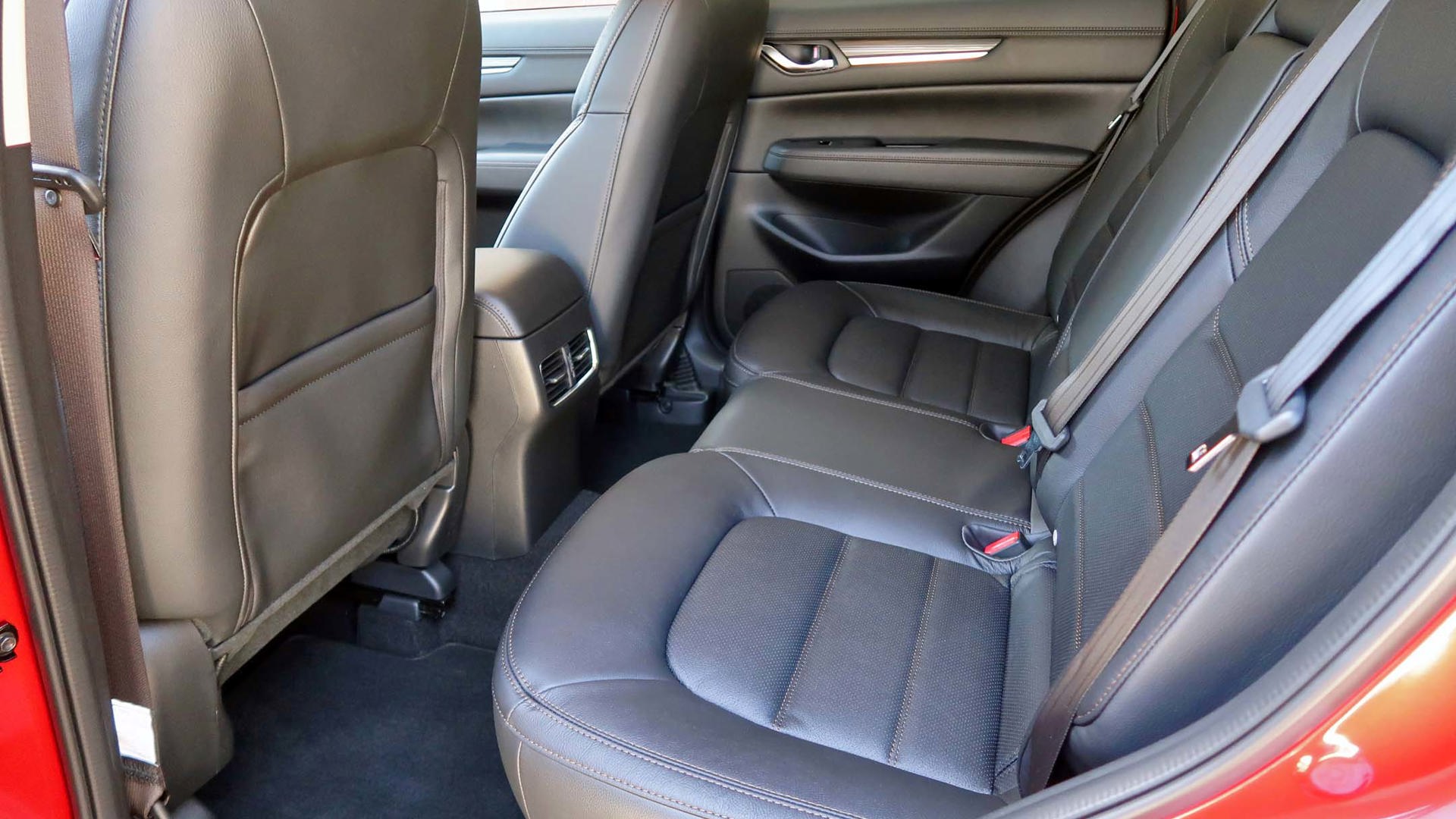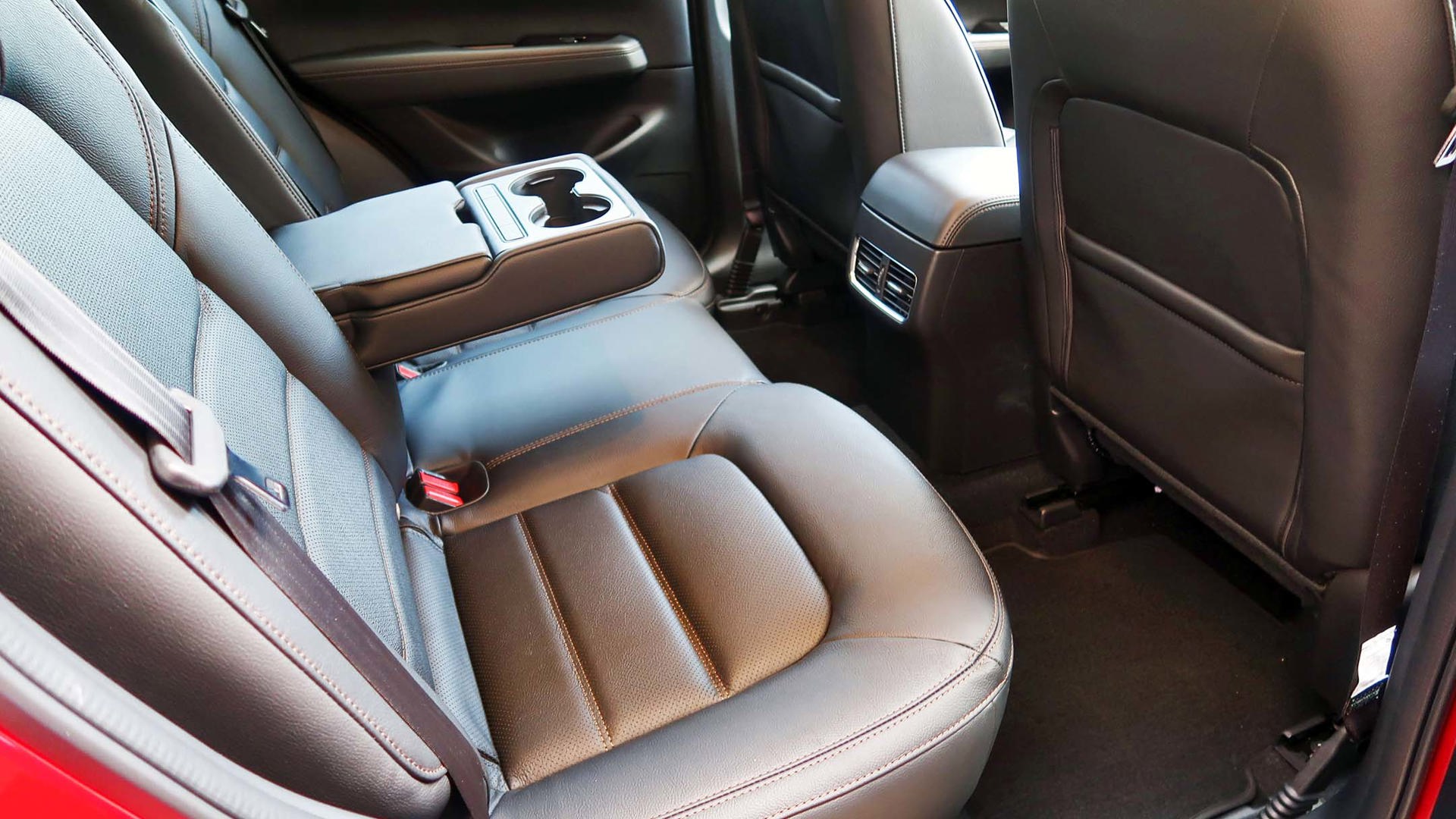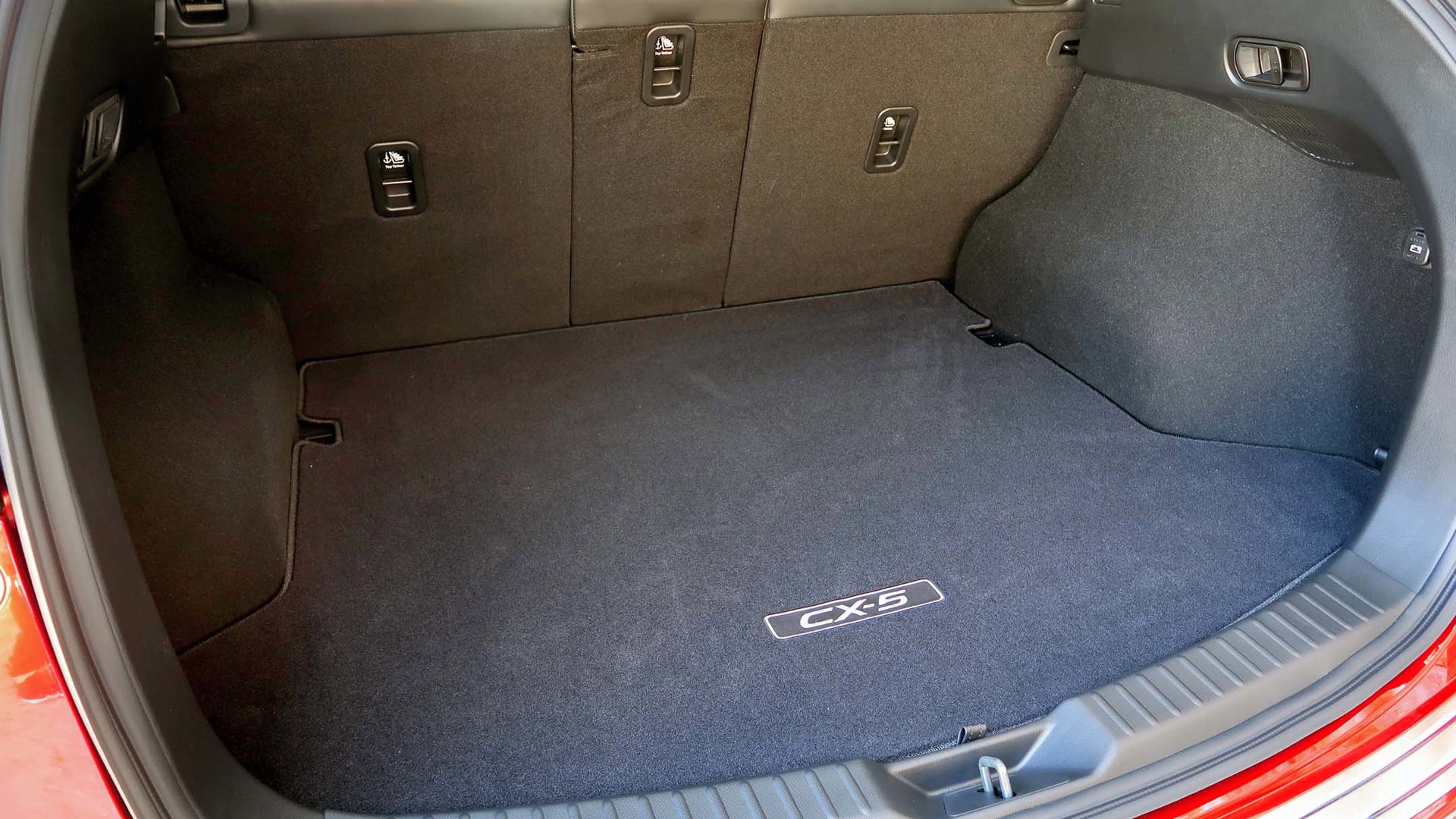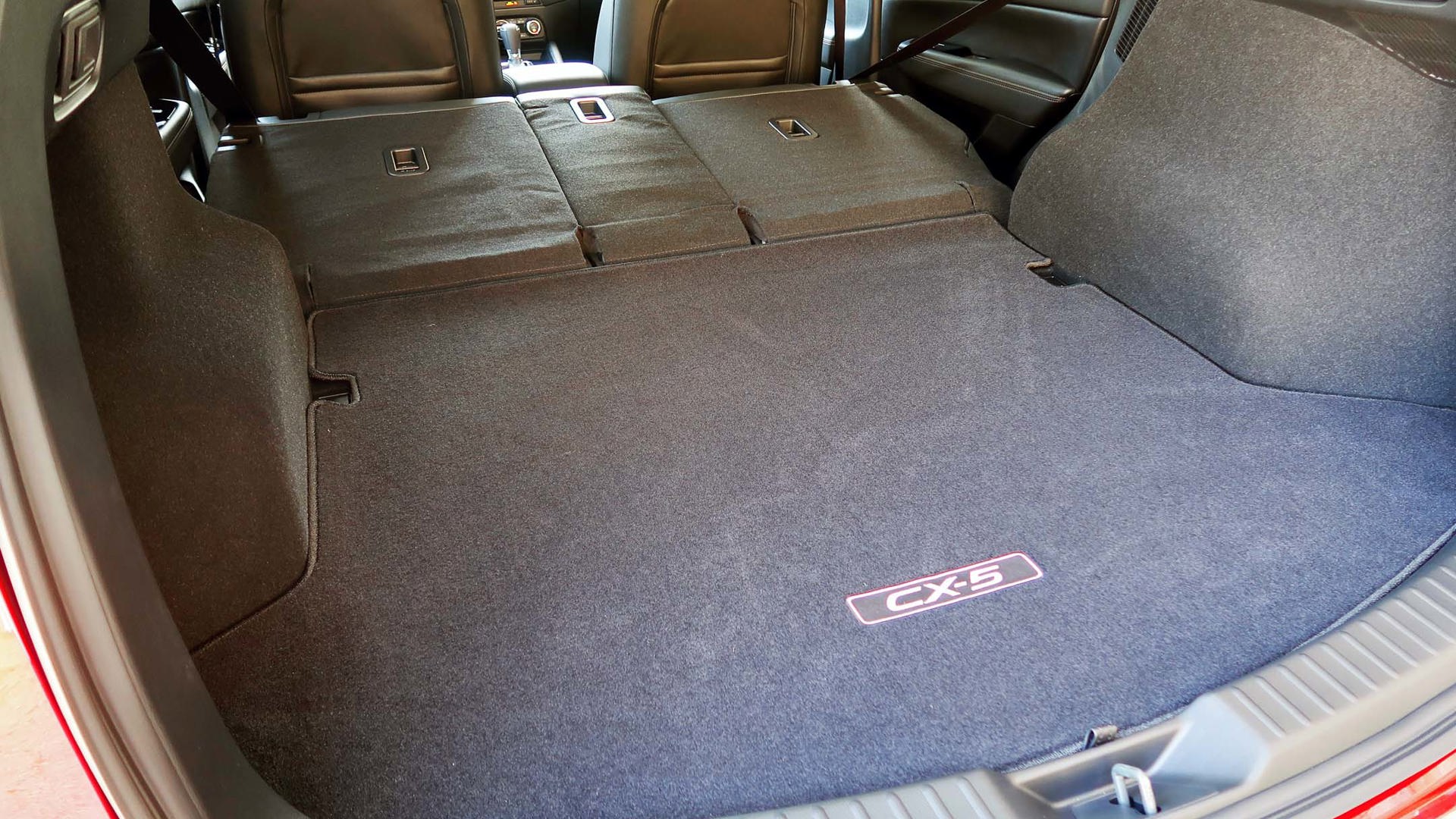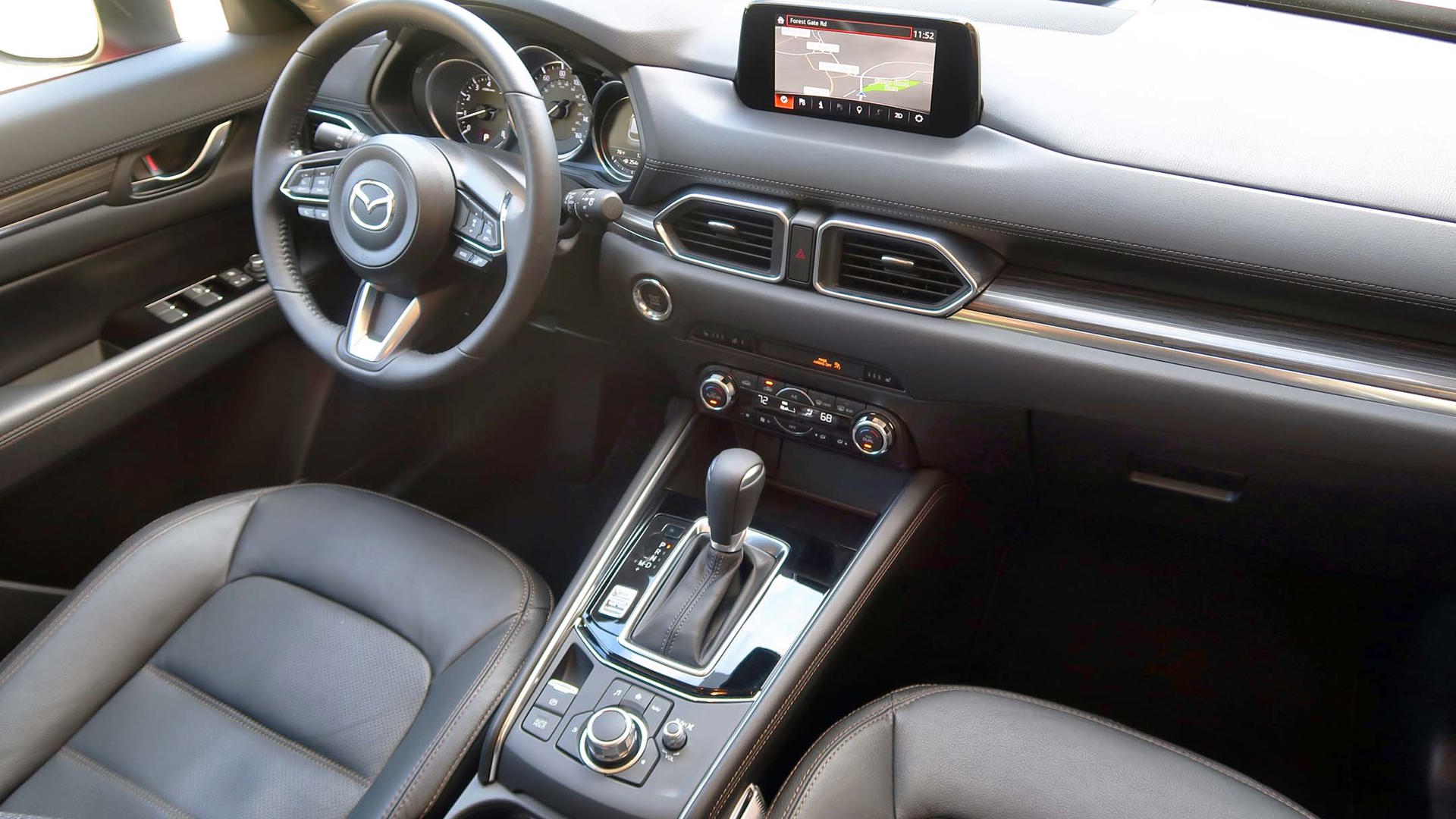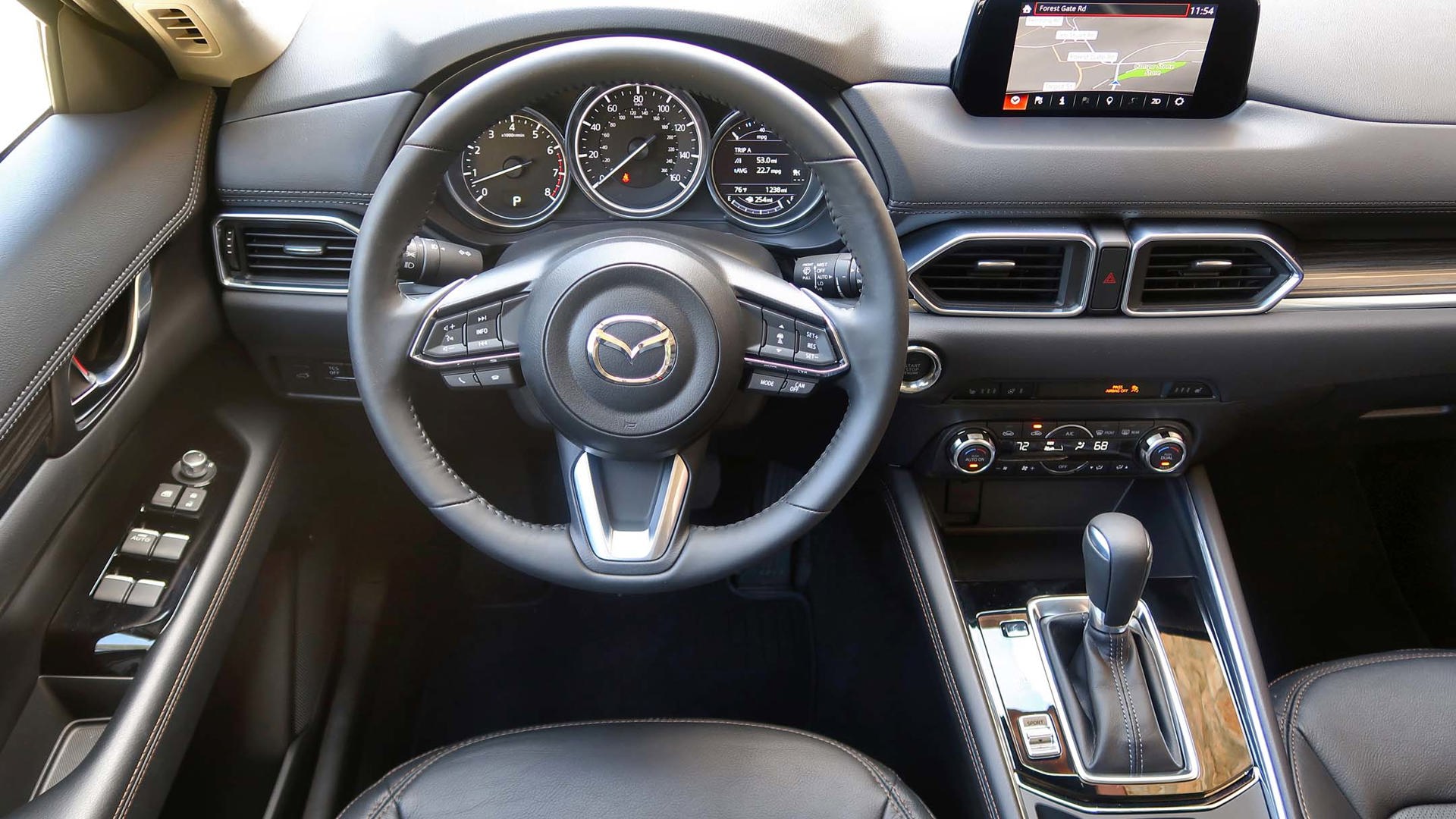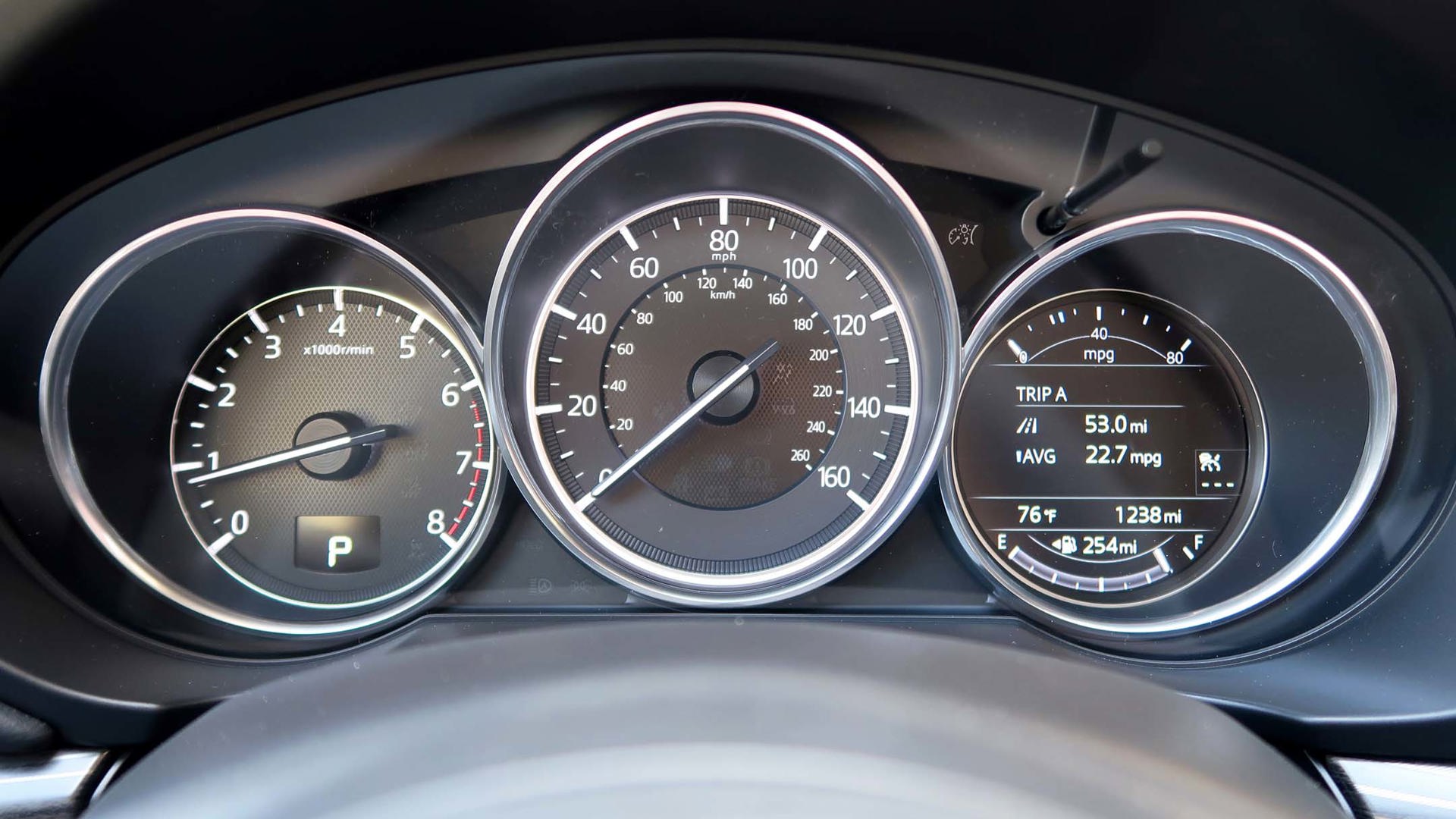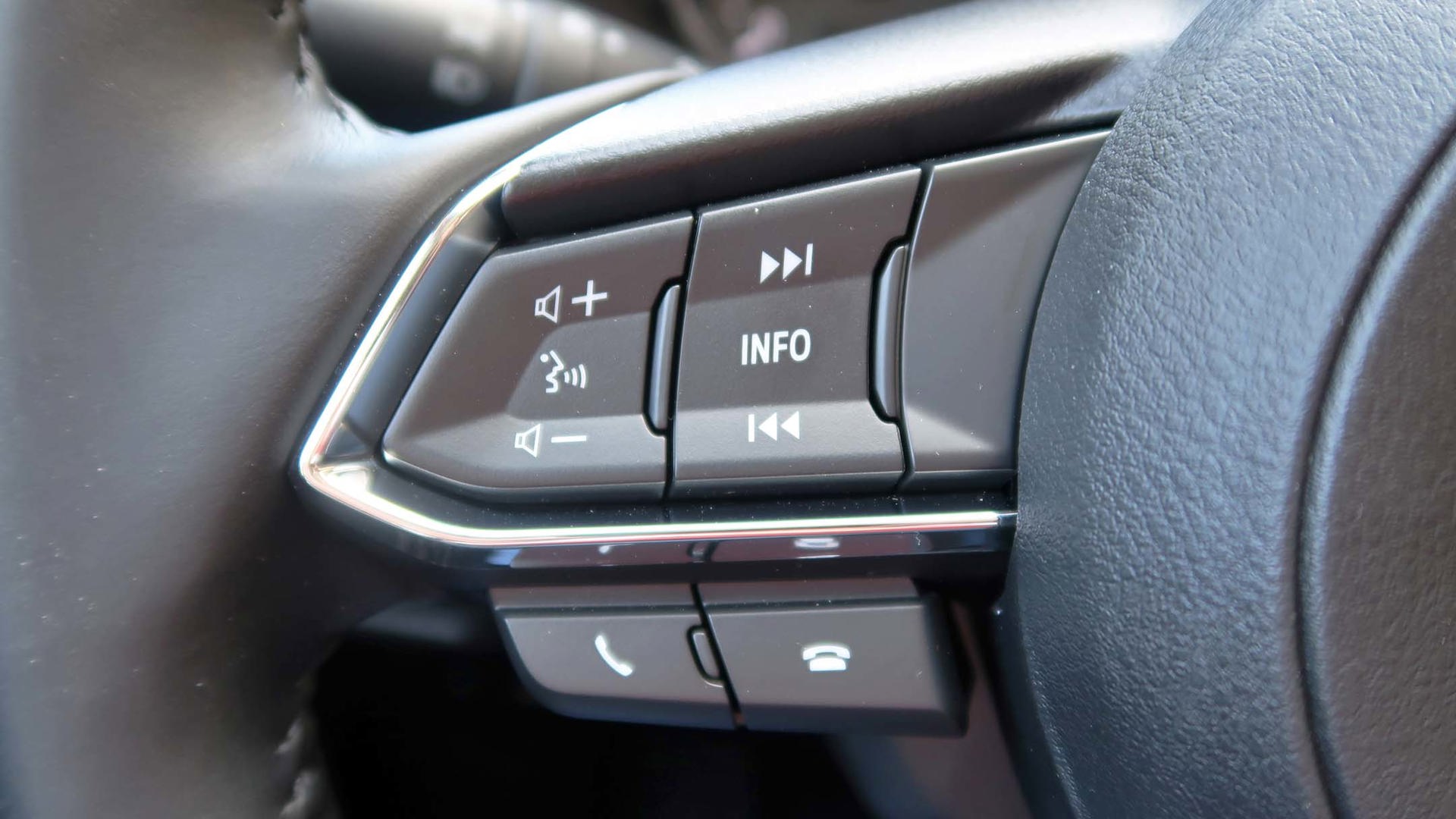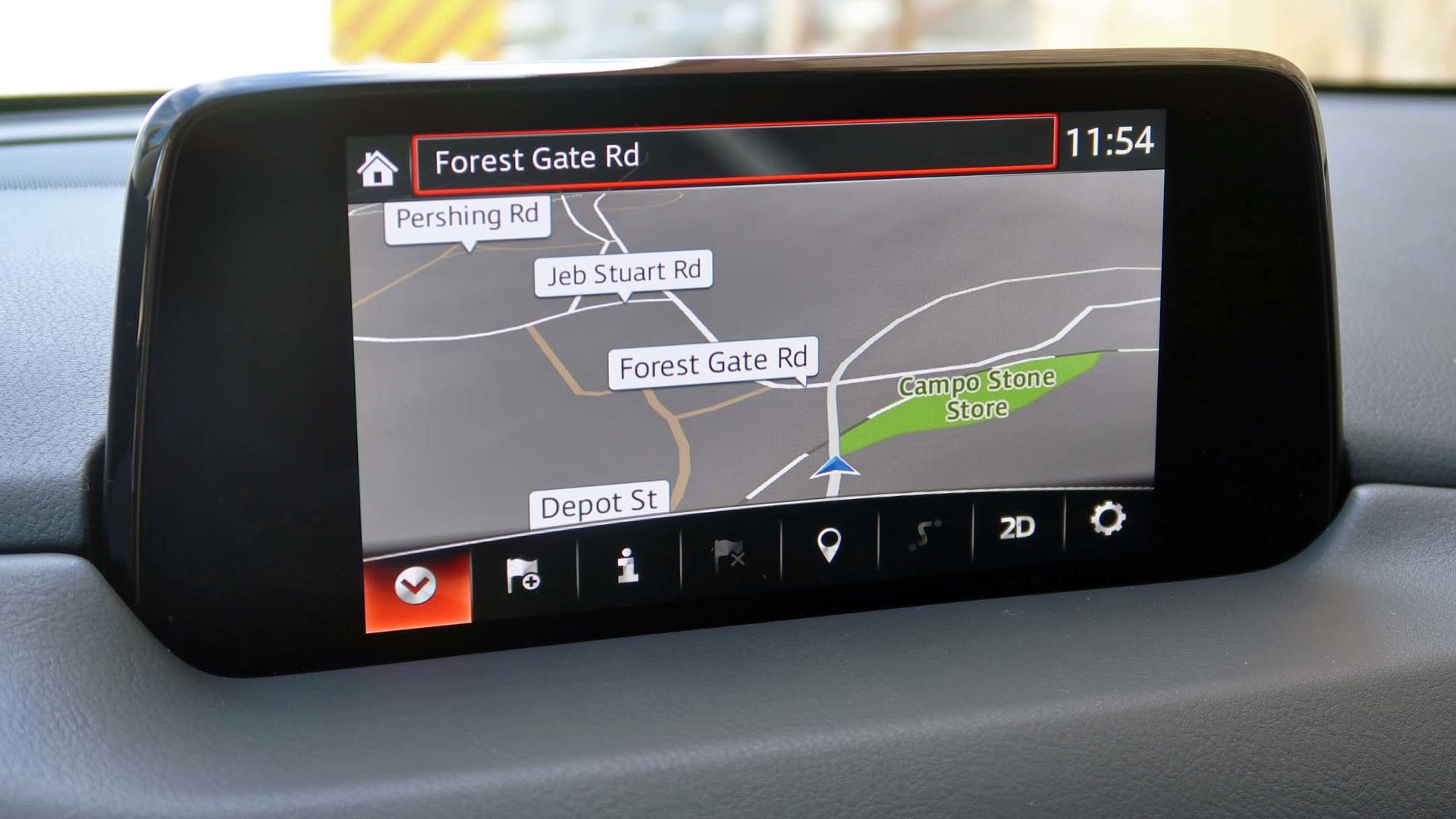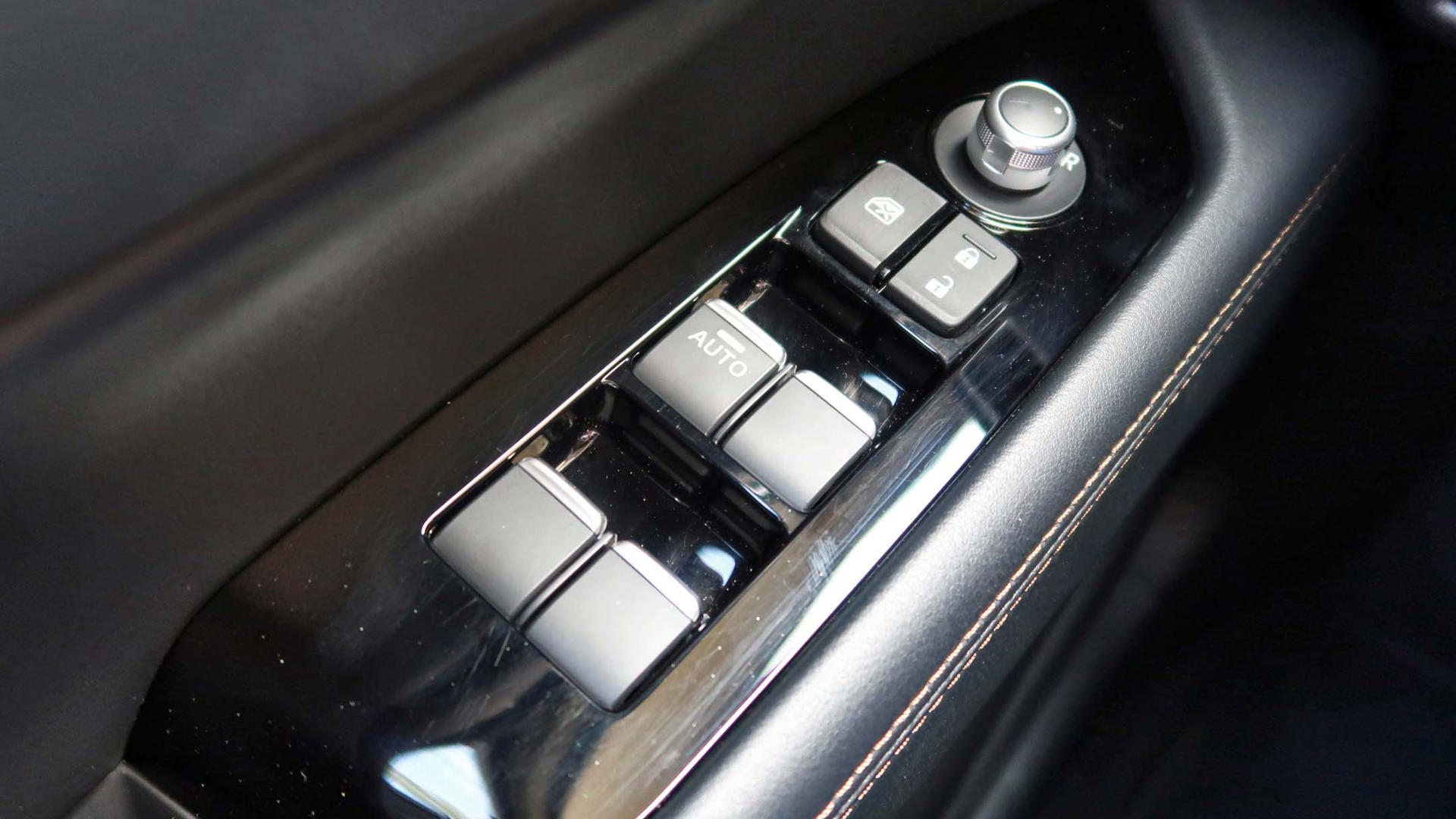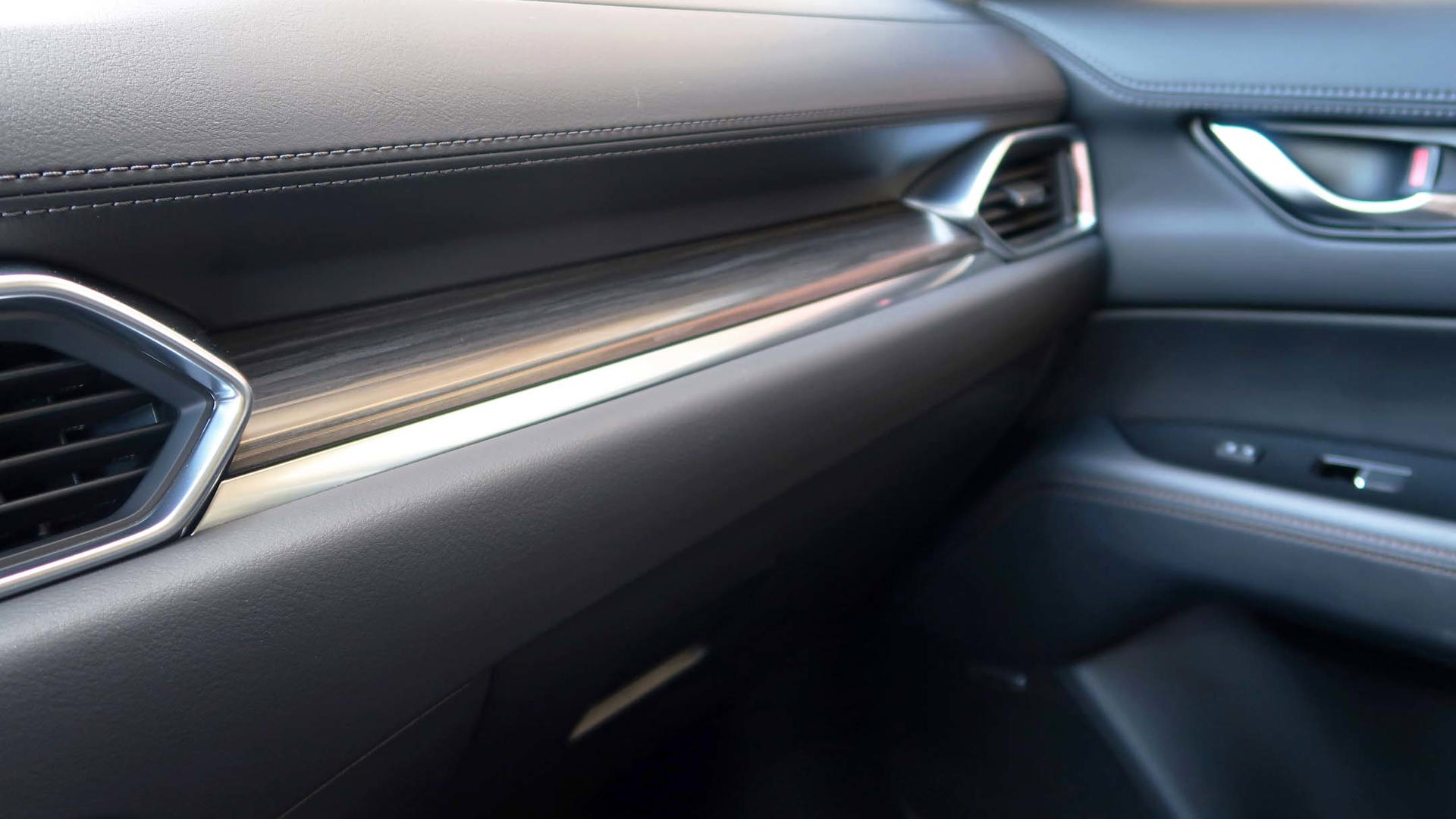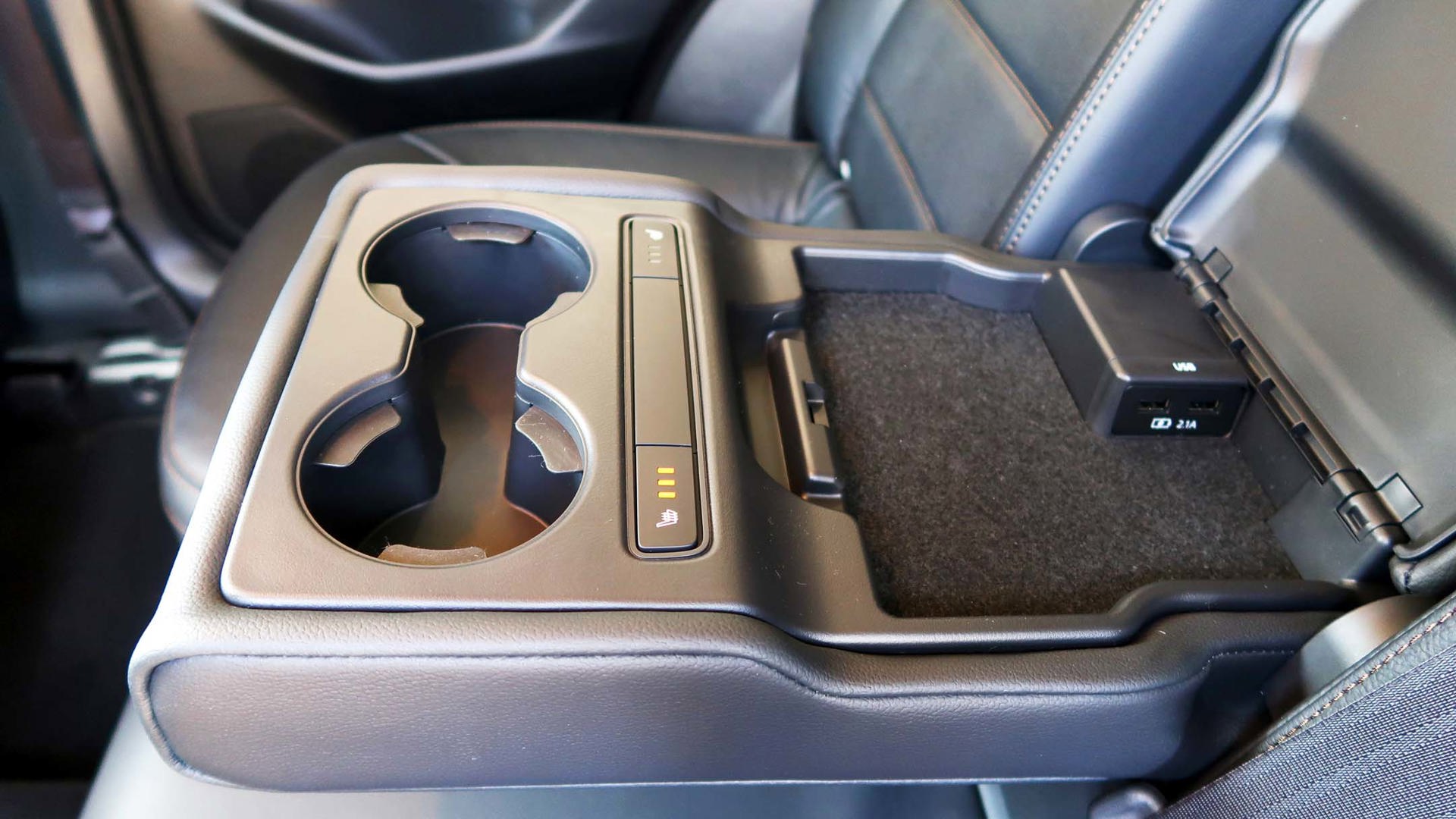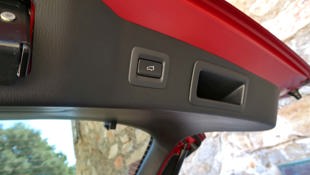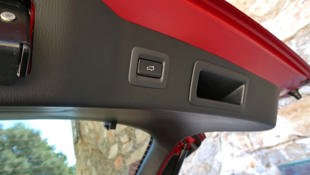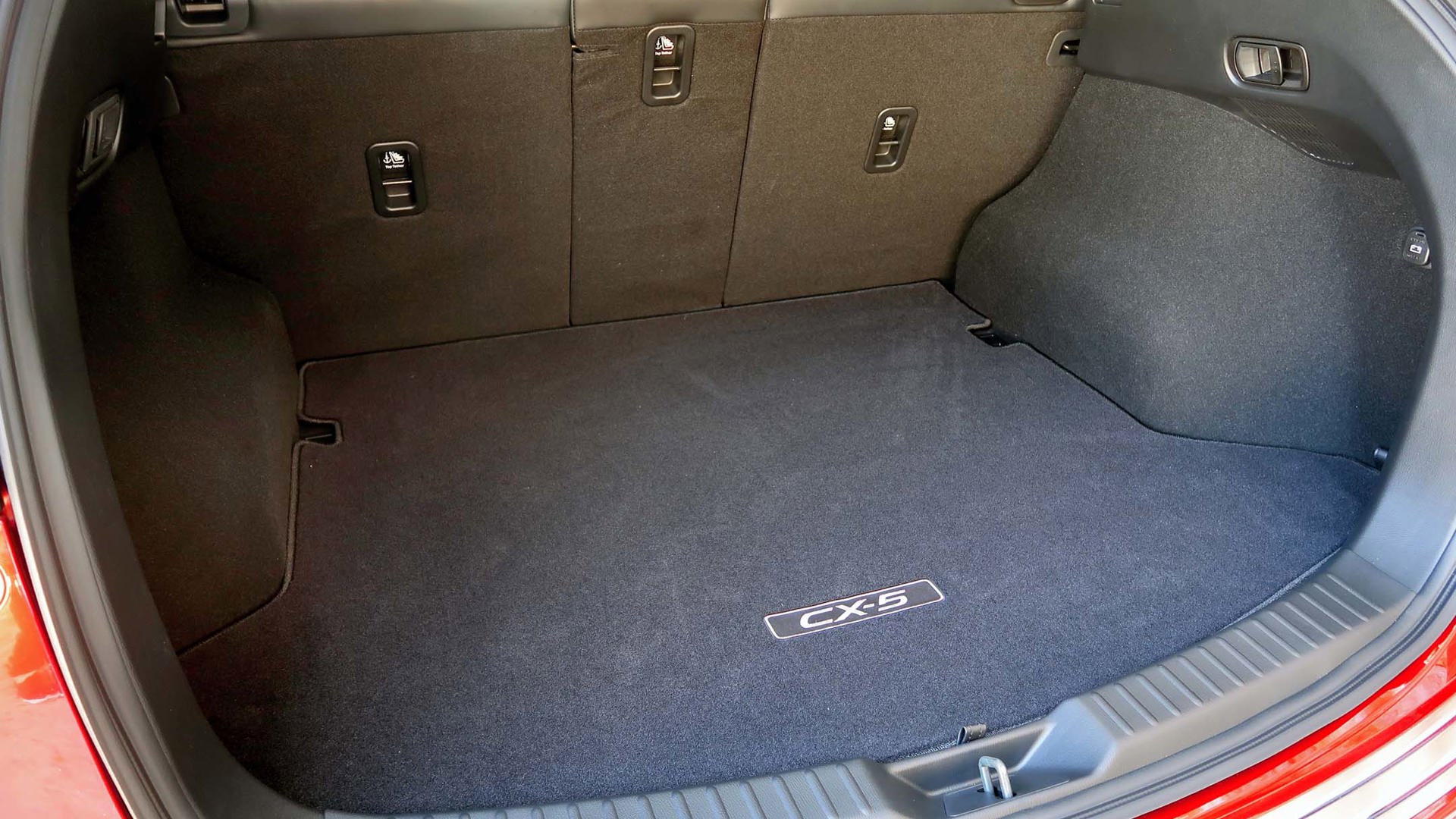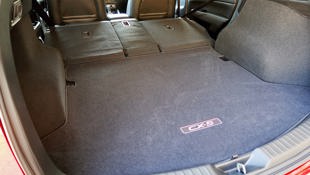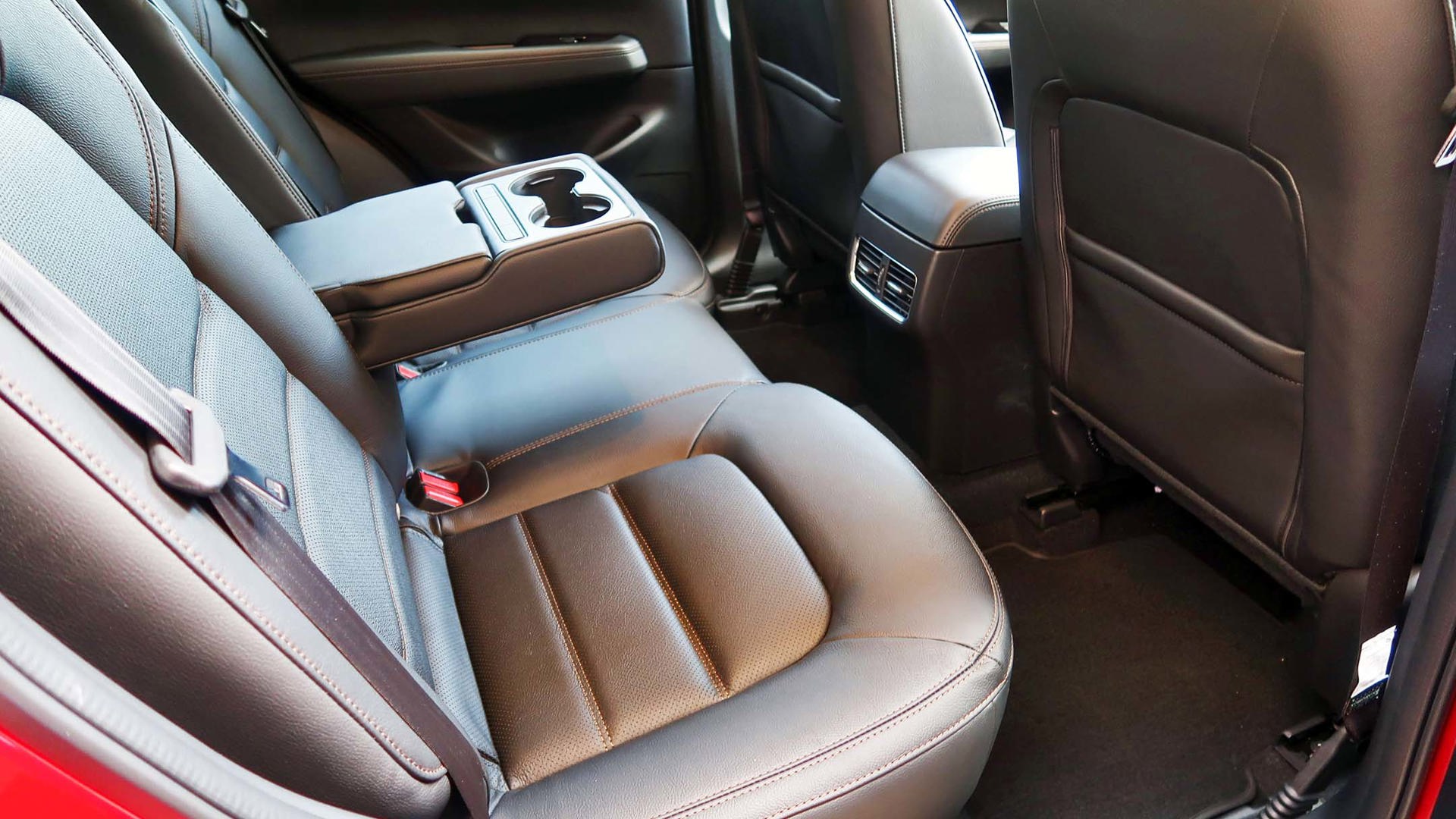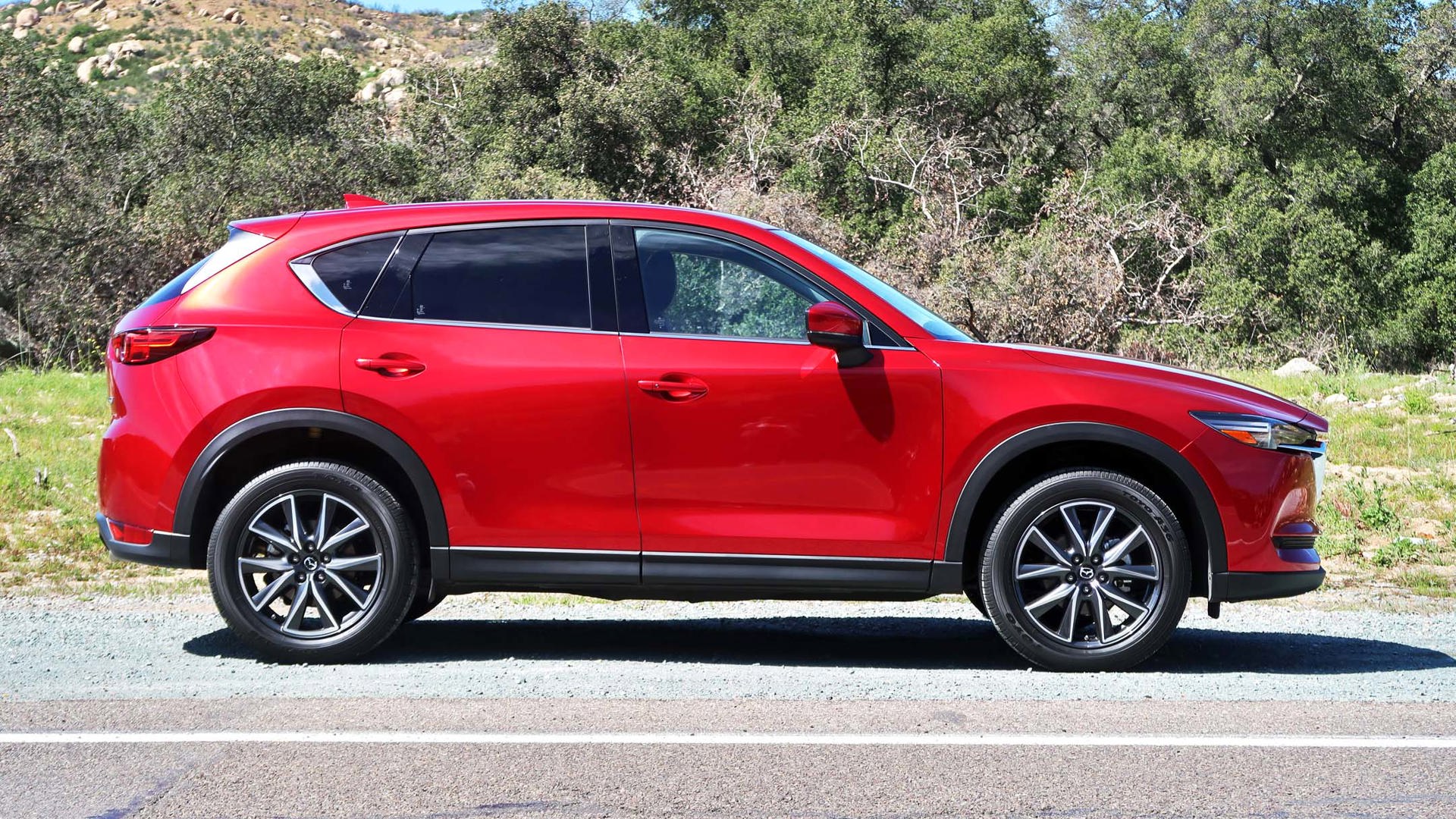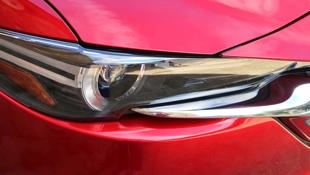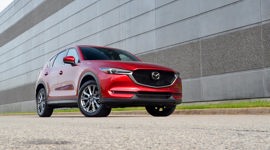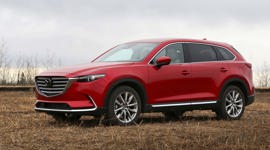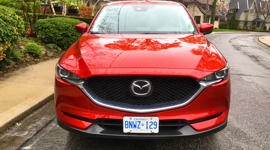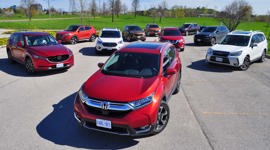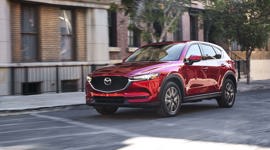SAN DIEGO, California – Lest you think there hasn’t been a sea change in Canadian vehicle preferences, consider this: Mazda’s CX-5, the middle child of the three SUVs it sells, recently eclipsed the Mazda3 as the company’s bestselling vehicle. And it’s likely going to keep that crown, as the company rolls out a next-generation version for 2017.
Who knew some people wouldn’t buy one just because it didn’t have a power liftgate? And so now it has one.
Mazda has always set a target of sharp handling and fun toss-ability, even in its utility vehicles, but this time around it adds an upscale look and feel that’s comparable to some upscale nameplates, but at a mainstream price. That’s not just marketing spiel, either. I drove some Audi, BMW, Lexus and Mercedes-Benz models in comparison, and the CX-5 actually held its own against them.
While it’s touted as all-new, it really feels more like an evolution. Throttle response is better, handling’s smoother, the interior is considerably improved, and some new features were added in response to customer input. Who knew some people wouldn’t buy one just because it didn’t have a power liftgate? And so now it has one.
As before, the CX-5 comes with a 2.0-litre or 2.5-litre four-cylinder engine. The 2.0-litre is available with a six-speed manual or six-speed automatic, while the autobox is the sole unit for the 2.5-litre. The diesel engine promised for so long will arrive late this year on the 2018s. Mazda expects it won’t just draw in its own customers who have been waiting for one, but also those who had planned to buy a certain German automaker’s diesel sedans and hatchbacks before they got pulled off the shelves.
The 2.0-litre is unchanged from 2016 and is primarily there for an attractive bottom-line price point. The base GX in FWD with manual starts at $24,900. That’s more than the $22,995 base for the outgoing model, but that 2017 starter model contains features that were extra-charge on the 2016. The GX is the only trim that uses the 2.0-litre, but it can be optioned with the 2.5-litre and with AWD.
The volume-selling trim is the GS, which starts at $29,100 in FWD and $31,100 in AWD. The top-line GT comes only in all-wheel drive at $34,700, and can be ordered with an optional tech package that finishes the lineup at $36,300.
The 2.5-litre’s basic architecture hasn’t changed, but it gets a few internal modifications, such as redesigned pistons to reduce friction and prevent knock with regular-grade fuel despite the high compression (using premium gas doesn’t change the power, just the thickness of your wallet). Horsepower gets only a three-pony bump, up to 187 from 184, while torque is unchanged at 185 lb-ft.
But the big difference is in how it feels. Mazda’s philosophy is to give you better driveability, rather than massive horsepower. So there’s now a more linear response to the throttle, a slightly longer delay from first to second for better acceleration, and quicker downshifts. It might not be all that powerful, but it feels like it is, and that’s what makes it such fun to drive. The transmission also responds quickly when you row up or down the gears in manual shift mode, but you must do that from the gearshift lever. Hey, power-liftgate people, why didn’t you demand paddle shifters, too?
The CX-5 uses Mazda’s new G-Vectoring Control, one of the coolest features you’ve probably never heard of, and wouldn’t notice anyway. It’s a software program that reduces engine torque when you initially turn the steering wheel, which transfers weight to the front tires to improve grip and handling. It’s so fast and minor that it’s impossible to detect, but the driver has to make fewer steering corrections, especially on rough roads, and passengers don’t get jostled around as much on turns. You don’t really know why the vehicle feels so smooth, just that it does.
But you really notice the interior improvements, starting with a much quieter cabin, the result of not just adding more padding and seals, but even fixing a vibration that came through a pinch-weld in the door panel. There are more soft-touch surfaces, better-looking design, and a steering wheel that isn’t as cluttered with buttons and is heated on the GS and GT. The tablet-style infotainment screen now perches on top of the dash, but the buttons and dials that control it are set back on the centre console, and it’s not as quick or as easy to use as a touchscreen. And while navigation can be added to any model not initially equipped (it’s on an SD card you buy from the dealer), Apple CarPlay and Android Auto are still missing in action. Mazda says it’s in negotiations to get them, and they’ll be available as a retrofit when it finally happens, but there’s no word on exactly when that will be.
Rear-seat comfort was a common complaint, and so the back chairs now recline farther, with decent legroom and a lot of space under the front seat for slipping one’s feet. Those rear chairs now fold 40/20/40 instead of 60/40, and fall almost flat, without the hump that got in the way of cargo loading before. The rear doors open wider, there are adjustable rear climate vents, and the folding armrest on the GS and GT include two USB charging ports, while the GT adds heated rear seats.
There is some new electronic wizardry as well, including adaptive cruise control with stop-and-go ability, brake auto-hold, and a proper windshield-projected head-up display, rather than the chintzy pop-up plastic screen Mazda’s been using. The new system is easier to see and includes speed limit and stop sign recognition.
The whole all-new, best-ever, class-leading stuff gets thrown around any time a model is redesigned, but Mazda has nailed it on this one. Other than a couple of minor quibbles, the new CX-5 does just about everything right, from great response and handling, to a good-looking and comfy interior. This really is well done. Don’t expect the CX-5 to lose that bestselling Mazda crown anytime soon.
